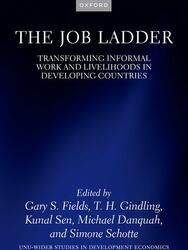Book Chapter
Transforming informal work and livelihoods in Costa Rica and Nicaragua
We divide workers into six work statuses: formal self-employed, upper-tier informal self-employed, lower-tier informal self-employed, formal wage-employed, upper-tier informal wage employed, and lower-tier informal wage-employed. In both countries earnings are highest for formal work, next for upper-tier informal, and last for lower-tier informal.
Mobility out of lower-tier informal is higher than out of all other work statuses, and most transitions are into a higher-wage work status. This suggests that lower-tier informal work in Costa Rica and Nicaragua is not a 'dead end' and that there is scope to promote transitions to higher work statuses. Transitions from all types of informality into formality are more common in Costa Rica than in Nicaragua, partly due to the larger proportion of formal workers within Costa Rica.
Regressions of transitions on worker characteristics suggest that policies of providing vocational training and formal education to informal workers can promote transitions into better-paying work statuses.
 Join the network
Join the network